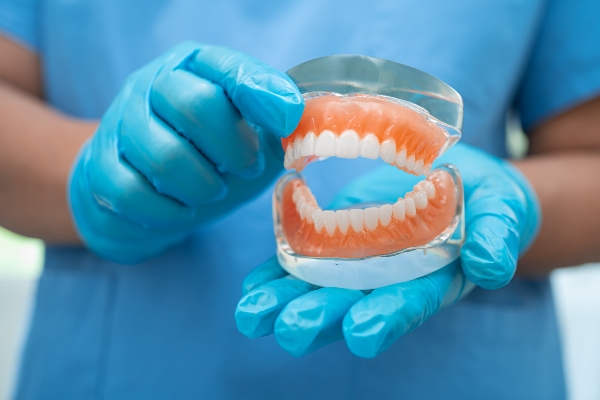4 Popular Methods for Dental Restoration

If your tooth structure is damaged by decay or injury, you will need to undergo a dental restoration procedure. The goal is to repair a cracked, chipped, broken, or decayed tooth and make it functional again. The choice of dental restoration depends on the level of damage. In this article, you will read about popular methods of tooth restoration.
Popular dental restoration methods
Dentists use different methods for restoring a damaged tooth, including the following.
Dental bonding
Small cavities, stains, and slightly cracked or broken teeth can all be repaired with dental bonding, which involves using a tooth-colored composite resin. After the dentist cleans the tooth, the composite is added to the problem area directly. The resin is exposed to UV or laser light to cure it after it has been applied and sculpted. The tooth is then filed and polished after the resin has hardened.
Dental fillings
A filling is a putty-like paste used to plug and close a hole in a tooth created by decay. Dental amalgam, gold, dental resin, or porcelain may all be used. The dentist will apply a local anesthetic, clean the tooth, and remove all decayed materials before placing the filling. The filling is then added to the hole left from the cavity. The filling is molded, polished, and left to harden after application.
Only small cavities can be restored with dental fillings. If the tooth is severely damaged, a different dental restoration method, like a dental crown, is recommended.
Dental inlays and onlays
Inlays and onlays are forms of indirect restorations used to restore teeth that have been severely decayed. Metal, composite resin, and porcelain are the most common materials used. An inlay is a dental restoration that is used to fill a hole in the middle of the tooth. An onlay not only fills the cavity but also protects the chewing surface and in some cases, the tooth's edges. Onlays are used to repair teeth whose outer structures are affected by decay.
Dental crowns
Crowns are created to encase the entire outer tooth structure and are used to restore badly damaged teeth. Crowns, like inlays and onlays, are laboratory-made indirect restorations. They shield teeth that have been seriously affected by infection and prevent further structural deterioration.
Two steps are involved in placing a crown. To prepare a tooth for the crown, the dentist first removes damaged tissue from the tooth, cleans it, and roughens the surface. Following that, the dentist takes an impression of the prepared tooth and puts a temporary crown on it. A permanent crown is fabricated in a dental lab using the mold of the prepared tooth. During the second appointment, the dentist removes the temporary crown and then cleans the tooth and places the permanent crown.
The bottom line
After the initial oral exam, the general dentist will select the least invasive or most durable dental restoration possible to restore your smile. Find out which dental restoration is best for you by speaking to a dental professional today.
Request an appointment here: https://brimhalldentalgroup.com or call Brimhall Dental Group at (661) 249-1122 for an appointment in our Bakersfield office.
Check out what others are saying about our dental services on Yelp: Dental Restorations in Bakersfield, CA.
Recent Posts
At some time or another, most individuals will need dental restoration. Restoring teeth is necessary when the teeth are in poor condition due to decay or a lack of proper oral care. Modern dentistry offers a wide variety of options for dental restorations.There are so many fantastic alternatives when it comes to dental restorations that…
Are you in need of dental restoration and don’t know where to turn? You are not alone. Countless patients ask themselves this nagging question daily. We all want to have the most beautiful and bright smile but aren’t sure how to achieve our goal. Fortunately, there are solutions that you can count on. There are many…
Dental restorations offer ways to preserve your teeth and take care of your oral health even when signs of decay begin to occur. A problem might start out as a very small cavity, but if you have not kept up with regular dental appointments and did not notice any pain, it is possible you may…
Dentists perform dozens of types of dental restorations, ranging from minimally invasive fillings to invasive but wholly restorative dental implants. When a dentist discusses the need for you to invest in restoration, you may wonder how they will make a recommendation. What factors will the dentist consider when deciding what techniques and materials to use…


